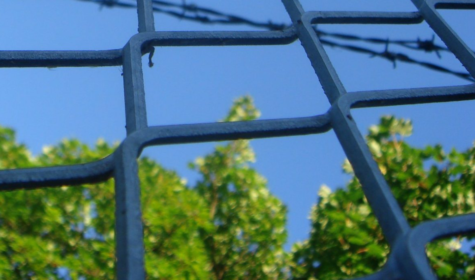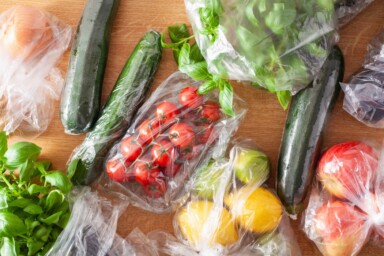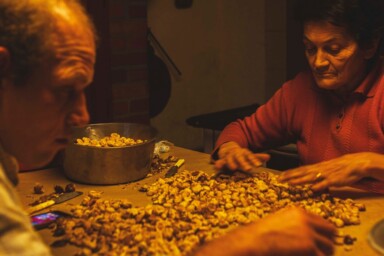Since the start of 2019, Bonnie has been working with staff at HMP Bristol on a ‘Greener Prisons’ project, linking education with horticulture and gardening.
In recent years, it has become increasingly evident that spending time in green spaces can benefit both mental and physical wellbeing. British Health Secretary Matt Hancock has backed the expansion of ‘social prescribing’ – a growing NHS movement – which includes recommending activities such as gardening and outdoor sports as alternatives to medicine. In Japan, the practice of ‘forest bathing’ is believed to prevent illnesses including cancer, depression, anxiety and stress. Food growing and gardening have also been shown to improve mental and physical wellbeing.
For many of the 79,600 inmates in prisons across the UK, mental health is a serious problem. A report by the House of Commons calls the record high numbers of self-inflicted deaths and incidents of self-harm ‘a damning indictment of the current state of mental health of those in prison and the prison environment overall,’ and says improving mental health ‘is an essential step to reducing re-offending and ensuring that those who are released from prison can rebuild their lives in the community.’
The physical prison environment significantly impacts upon the wellbeing of prisoners. Throughout history, prison design has evolved, as has our understanding of the role of prisons. The Romans were among the first to use prisons as places of punishment, often housing inmates in existing structures such as metal cages, basements and quarries. During the Middle Ages, the gaols and dungeons of castles and fortresses were used to house prisoners and were thought of as places of spectacle. In the modern era, Jeremy Bentham’s ‘panopticon’ (a prison designed to allow a centrally placed observer to survey all prisoners and control their behaviour) became the defining model for prison design during the first half of the 19th century. In 1975, Michel Foucault, a French philosopher and author of Discipline and Punish: The Birth of the Prison, studied the cultural shifts associated with crime and punishment. He demonstrated the development of the Western system of prisons for social control, and the growth of disciplinary society as a whole. Prison reformists throughout the ages, such as Elizabeth Fry, have long called for prisons to become places of rehabilitation rather than punishment.
Today, it has been argued that much of the UK’s prison estate is out of date and needs to be upgraded. This is partly due to the exacerbating effect that a deteriorating prison estate can have on mental health. It is no surprise, therefore, that many social and environmental justice organisations point to gardening and horticultural training in prisons, as a successful way of improving the mental health and wellbeing of inmates. A 2016 study from Arcadia University notes that prisoners in the United States that participate in farm-based vocational training, decrease their chances of reoffending by 20%, whilst research by the University of Central Lancashire has found that prison horticulture programmes have a ‘marked effect on mental health and wellbeing’.
For prisoners involved in growing food, there is also the opportunity to increase their awareness of nutrition. Studies have found that ‘food sustainability’ in prisons, including the provision of good quality food to inmates, can reduce disciplinary incidents, aggression and violent behaviour. However, with an average of just £2 spent on each prisoner’s food provisions per day (significantly lower than £5.99 per person, as recommended by Public Health England to achieve a balanced diet), it is no wonder that prisoners are largely dissatisfied with the food on offer. ‘It’s all chips or potatoes,’ commented one inmate in a 2016 Prison Inspectorate report on food in prisons.
Prison farms and horticultural training
Believe it or not, just 25 years ago the UK prison system was once entirely self-sufficient in terms of food, employing 2,000 prisoners annually and producing enough to feed 47,000 inmates three times a day. In recent years, the number of prison farms (defined as larger than 60 acres, with large scale arable or livestock production) in England and Wales has significantly reduced. Between 2002 and 2005, the Prison Service cut its farming commitment from 23 farms to the current five, out of a total of 117 prisons. Over the same time period, a programme to replace traditional prison farms with horticultural facilities included the investment of nearly £1 million to horticultural equipment. The reasoning behind this, according to one prison’s service adviser, is that ‘there were fewer job opportunities outside in agriculture, though plenty in horticulture,’ adding ‘most prisons are town-based, so they are more likely to find work with a parks department than a farm’.
This change in focus may have also been financially motivated, with prison farmland either sold or put up for rent. The financial burden of a booming prison population, (which has quadrupled in size since 1990), has put increasing pressure on the prison service, Government and taxpayers, while also compounding the many physical and mental health problems for prisoners, including diet-related ill health and a growing sense of isolation.
Interestingly, in 2018, former Secretary of State for Justice David Gauke launched a strategy to boost prisoners’ prospects, targeting training in key sectors such as agriculture – which, he suggested, would be a sector impacted by the UK’s departure from the European Union. The Ministry of Justice’s Education and Employment Strategy 2018 included plans to reform prison education by empowering governors to tailor their educational programmes to meet the needs of their prison population and to suit the local jobs market. For example, a prison partnership with The Clink (a charity that offers catering and horticultural training in prisons), ties work already being done by prisoners such as cooking in prison kitchens, with employment on release.
However, more recent announcements made by Prime Minister Boris Johnson include pledging £2.5 billion to create an extra 10,000 prison places and £100 million to improve prison security. This suggests the Government’s emphasis may be shifting back towards punishment rather than rehabilitation, even though the current rate of reoffending (48% of adult prisoners are reconvicted within one year of release) costs the UK taxpayer an estimated £15 billion per year.
Seeds of hope?
Despite this, horticultural projects can be found in prisons across the UK. HMP Parc is a private training prison and young offender institution with a capacity of almost 1,700, including 60 young people. The prison grounds include allotments for fruit and vegetable production that are used in the staff canteen, a former area of wasteland that is now a calming Japanese-style garden, and spaces for wildlife – including a beehive and a pond. Those who work in the prison’s garden are paid £28 a week for 40 hours work alongside studying for a qualification in horticulture. In 2019, the prison was awarded the RHS Windlesham Trophy for the ‘Best Kept Prison Garden in England and Wales’. Director of HMP Parc, Janet Wallsgrove, called the win ‘a testament to the dedication and creativity of the prisoners and staff who work on the gardening team,’ adding that the win would mean a lot, particularly to those working towards horticultural qualifications.
Similarly, The Rye Hill Garden Project, delivered by Garden Organic at HMP Rye Hill provides support to offenders who have a background of drug misuse to assist their recovery. A commissioned report suggests that the project provides an environment that ‘facilitates opportunities for learning and developing skills, and encourages offenders to make behavioural changes both in and outside the prison’. Garden Organic’s Operations Manager said, ‘The prisoners like working with nature rather than opposing it. They also like the chemical-free approach to food growing because many of them are trying to rid their bodies of chemical dependencies.’ The positive role of engaging in food growing was a reoccurring theme in the data. One prisoner called the work ‘rewarding’. ‘We can taste what we’re growing. I’ve never done gardening before this prison. I didn’t know I liked it, but I love it.’ Another commented on the skills gained during the gardening experience: ‘I need to learn something new which I can use on release, something I’d enjoy doing as a job, plus I need to do something constructive here and now, in order to maintain my recovery.’
Working across several UK prisons, Greener on the Outside for Prisons (GOOP) is a programme of therapeutic horticulture to improve health and wellbeing and support the reduction of reoffending rates. HMP Styal was one of the first GOOP projects, which began in 2009. Having discovered horticulture at the prison, one former inmate went on to study for her Horticulture Level 1 certificate and is now working at a garden centre.
What next?
For many, the idea that we should be investing money into better education for inmates whilst offering them access to natural spaces and healthy food, may seem a little too ‘generous’. Distorted media reporting often gives the impression that prisons offer little in the way of punishment, however prison staff and inmates would disagree. One thing that everyone can surely agree on (even tough-on-crime politicians) is that ‘prisons are not working’.
With so much evidence pointing to the positive impacts of nature-based activities on improving mental and physical wellbeing, as well as reducing reoffending, it seems like an ideal time to promote gardening and horticulture in all UK prisons. Perhaps ‘recovery through nature’, proven time and again to benefit those who need it most, can offer a hopeful way forward.
Note: I really recommend reading this article written in The Atlantic in 2013, Why Scandinavian Prisons are Superior. Author Doran Larson, illuminates the incredibly pertinent story of US mass incarceration (of the urban poor – particularly young black men) in the US, and how this institutionalisation of the prison system ‘has created a nation where few middle-class white Americans can name anyone they know personally who has been sentenced to prison, and even fewer black Americans of any class cannot’, compounded with the longest prison sentences in the industrialised world and high rates of reoffending. In stark contrast, Larson explains why Scandinavian ‘open prisons’ in which life inside resembles life outside as much as possible, works so well.







